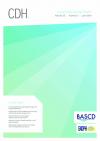Community Dental Health

- Cover Date:
- June 2018
- Print ISSN:
- 0265 539X
- Electronic ISSN:
- 2515-1746
- Vol:
- 35
- Issue:
- 2
Adaptation and validation of a Nepali version of the Child-Oral Impacts on Daily Performances Index (C-OIDP)
doi:10.1922/CDH_4164Saujanya08
The need for culturally validated measures of Oral Health-Related Quality of Life (OHRQoL) has been increasing in recent years. Objectives: To adapt the Child-Oral Impacts on Daily Performances (C-OIDP) index into the Nepali language and to validate it, to assess and compare the outcomes of self-reported oral problems, and to validate a structured questionnaire on general hygiene practices, oral hygiene practices, dietary habits, and use of tobacco. Basic research design: A school-based cross-sectional study on pilot and national samples. Participants: Nepalese schoolchildren representing WHO index age groups (5–6-year-olds, 12-year-olds, and 15-year-olds). The study was conducted on a pilot sample (n=128) selected conveniently and a national sample (n=1,052), selected from 18 sampling sites on the basis
of the stratified random sampling method. Main outcome measures: Adapted and validated Nepali C-OIDP Results: The Nepali C-OIDP showed excellent validation and reliability tests in both studies. The Cronbach’s alpha coefficients were 0.82 and 0.71 respectively in the pilot and national study. The most common self-reported oral problem was toothache, which was statistically significantly higher in the national sample. Conclusions: The Nepali C-OIDP index is valid and reliable for measuring oral impacts on daily performance among schoolchildren of Nepal.
Key words: Adaptation, children, cross-cultural, linguistics, oral health, psychometrics, quality of life, self-report, Nepal
- Article Price
- £15.00
- Institution Article Price
- £
- Page Start
- 119
- Page End
- 126
- Authors
- Karki Saujanya, Laitala Marja-Liisa, Humagain Manoj, Päkkilä Jari, Anttonen Vuokko
Articles from this issue
- Title
- Pg. Start
- Pg. End
- Readying community water fluoridation advocates through training, surveillance, and empowerment
- 67
- 70
- Challenges associated with implementation of a school-based tooth-brushing and fluoride varnish programme in a diverse and transient urban population
- 71
- 74
- Community-based nutrition intervention to promote oral health and restore healthy body weight in refugee children: A scoping review
- 81
- 88
- Child, caregiver, and family factors associated with child dental utilization among Mexican migrant families in California
- 89
- 94
- Chronic Intra Oral Pain and Depressive Symptoms in Japanese Community-Dwelling Elderly: A Longitudinal Study
- 102
- 108
- Adaptation and validation of a Nepali version of the Child-Oral Impacts on Daily Performances Index (C-OIDP)
- 119
- 126
